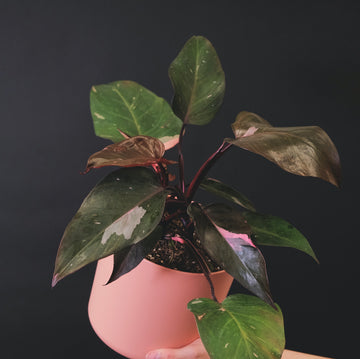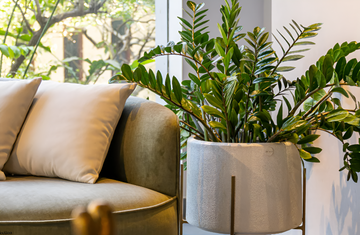In the world of indoor gardening, the Pink Princess Philodendron stands out as a captivating gem. With its striking variegated leaves, this plant adds a touch of royalty to any space. In this comprehensive guide, we will explore the enchanting world of Pink Princess Philodendron, along with essential care tips to ensure its flourishing beauty.
Care Tips for Your Pink Princess Philodendron
Understanding the Pink Princess Philodendron | Choosing the Right Planter | Essential Care Tips | The Do’s and Don'ts | Conclusion | Planter Recommendations
Understanding the Pink Princess Philodendron

The Pink Princess Philodendron, scientifically known as Philodendron erubescens, is renowned for its heart-shaped, deep green leaves adorned with pink streaks and splashes. Originating from the tropical rainforests of South America, this plant thrives in a warm and humid environment, making it an ideal choice for indoor gardening.
(back to top)
Choosing the Right Planter
(back to top)
Essential Care Tips

- Lighting: Pink Princess Philodendron plants thrive in bright, indirect sunlight. Avoid exposing them to harsh, direct sunlight, as it can scorch their delicate leaves.
- Temperature and Humidity: Maintain a warm and humid environment, ideally between 18-27°C. Regular misting or placing a humidifier nearby can create the perfect ambiance.
- Watering: Keep the soil consistently moist but not waterlogged. Allow the top inch of soil to dry out before watering again. Overwatering can lead to root rot, so be mindful of the plant's moisture needs.
- Soil: Use a well-draining, aerated potting mix enriched with organic matter. A mix of peat moss, perlite, and pine bark works well for Pink Princess Philodendron.
- Fertilisation: During the early summer feed your plant with a balanced liquid fertiliser every 2-4 weeks. Reduce feeding during the winter season when the plant enters a dormant phase.
- Pruning: Regular pruning helps maintain the plant's shape and encourages new growth.Pruning is essential for maintaining the Pink Princess Philodendron's elegant appearance. Remove any yellow or damaged leaves to encourage new growth. Additionally, if you notice leggy stems, consider pruning them back to promote a bushier, more compact plant.
- Pest Control and Disease: Pest Control and Disease Prevention Pink Princess Philodendrons are generally hardy, but they can still fall victim to pests like spider mites and aphids. Regularly inspect the leaves for signs of infestation, such as webbing or tiny insects. If detected, treat the plant with insecticidal soap or neem oil to eliminate the pests. Preventative measures, such as keeping the plant clean, avoiding overwatering, and providing adequate ventilation, can minimize the risk of diseases. Proper care significantly boosts your Pink Princess Philodendron's resistance to potential threats.
(back to top)
The Do’s and Don'ts

- Do provide ample indirect sunlight to encourage vibrant foliage.
- Don't expose the plant to drafts, cold temperatures, or sudden temperature fluctuations.
- Do repot the plant every 1-2 years to refresh the soil and provide more space for growth.
- Don't let the plant sit in standing water; ensure proper drainage to prevent root rot.
- Do wipe the leaves gently with a damp cloth to remove dust and maintain their glossy appearance.
- Don't over-fertilise, as excessive nutrients can harm the plant.
(back to top)
Conclusion
Recommendation for Your Pink Princess Philodendron Plant
Discover more planters for your Pink Princess Philodendron Plant










 At Palasa, we believe in the seamless fusion of nature, design and humanity.
At Palasa, we believe in the seamless fusion of nature, design and humanity.